HOW TO PLAY TEXAS HOLD'EM LIKE A BOSS
LEARN HOW TO PLAY TEXAS HOLD’EM POKER LIKE A BOSS WITH OUR FOOLPROOF GUIDE. WE’LL HAVE YOU PLAYING LIKE A PRO IN NO TIME. GET READY TO READ ‘EM AND WEEP (WITH JOY).
You’ll be stoked to know that picking up the rules of Texas Hold’em Poker is fairly easy if you’re a newbie. It’s nailing your strategy skills that you might find difficult as a newcomer to the Hold’em scene. It might seem daunting at first, but if you follow the basic rules and poker hands, you’ll get to grips with the game in a flash.
Whether you’re playing live or playing free poker online, you should know that both require the same level of strategy and skill. So, your first tidbit of advice from us is: you’ll need to know your stuff before you pull up a seat at the poker table.
From pot limits and poker hands, how to deal Texas Hold'em and betting rules and showdowns, here’s how to play Texas Hold’em poker like a total boss.
WHAT IS TEXAS HOLD'EM?
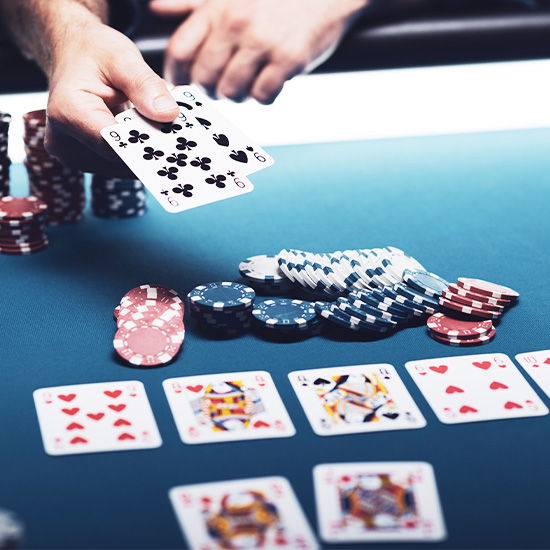
Before launching into how to play Texas Hold'em Poker, it's probably a good idea to first understand exactly what we're dealing with here (pun absolutely intended).
Any poker player worth their salt will almost certainly remember Matt Damon famously quoting Texas Hold’em as “the Cadillac of Poker” in the hit movie Rounders. Not least because it’s the most popular poker game on the planet—it’s also the most strategic.
In addition to being the most popular poker game on the planet, Texas Hold'em poker is likely the most popular poker variant at the table. It can be flashy, it can be expensive, and it sure packs a punch if you’re a poker player. But if you really want to master the illustrious "Cadillac of Poker", you’ll have to put in some groundwork—and, boy, have we got the goods for you below.
TEXAS HOLD'EM POKER RULES
The pack: Like most forms of poker games online, Texas Hold’em uses a standard 52-card deck which is shuffled before each hand.
Hole cards: To start, each player receives two cards face down that are known as ‘hole cards’.
Community cards: Following on from the hole cards, three rounds of ‘community cards’ are dealt face up into the center of the table. While Texas Hold'em poker focuses on community cards shared among players, card stud games, like Seven-Card Stud, rely on each player receiving their own individual cards.
The Flop: The first card is called ‘The Flop’ and draws three community cards.
The Turn: The second card is known as ‘The Turn’ and draws one community card
The River: The final community card drawn is known as ‘The River’.
After each round, players may choose to check, bet, call or fold.
The Objective of Texas Hold'em Poker: The player with the best combination of the five community cards and two hole cards wins.
It's also important to note that Texas Hold’em consists of four rounds. The size of the bet amount depend on the structure of the game, of which Hold’em has three possibilities:
NO-LIMIT TEXAS HOLD'EM
This is the most common form of Texas Hold’em.
In No-Limit Texas Hold’em, a player can bet any amount, from the minimum to the maximum number they have in front of them (known as going ‘all-in’).
However, there are caveats. The minimum raise has to equal the previous bet or raise—unless the raiser has fewer chips than that and would be put all-in. If another player wants to raise again (called a ‘3-bet’), they need to raise at least the amount of the previous raise.
It can get a little bit confusing for beginners, but when playing online, this is all worked out for you. Sweeeet.
POT-LIMIT TEXAS HOLD'EM
In Pot-Limit Texas Hold’em, a player can bet any amount from the minimum bet to the size of the pot. Players may bet or raise any amount over the minimum raise, up to the current pot size (known as ‘betting pot’).
The pot raise equals the current size of the pot, plus the current bet amount, plus your call of that bet amount. For example, if the pot is GC 200 and the current bet is GC 50, the pot raise would be GC 200 (pot size) + GC 50 (bet) + GC 50 (call) = GC 300. You can raise to that amount, plus an additional GC 50 for your call, making a total of GC 350.
FIXED-LIMIT TEXAS HOLD'EM (AKA LIMIT)
Pre-flop and post-flop, in Limit Hold’em, all bets and raises must be equal to the big blind (in a GC 2/GC 4 this would be GC 4). Post-turn and post-river, all bets and raises must be equal to twice the big blind (In a GC 2/GC 4 this would be GC 4).
The maximum raise is set at four times the big blind in all rounds. This gets easier to remember when playing.
TEXAS HOLD'EM ROUNDS
Now you know all about the various game structures, let's get back into those four rounds we spoke of earlier. It's important to note that although these guidelines apply to physical poker at a table and online poker, we'll explore the rounds as if you were playing Texas Hold'em online with a screen.
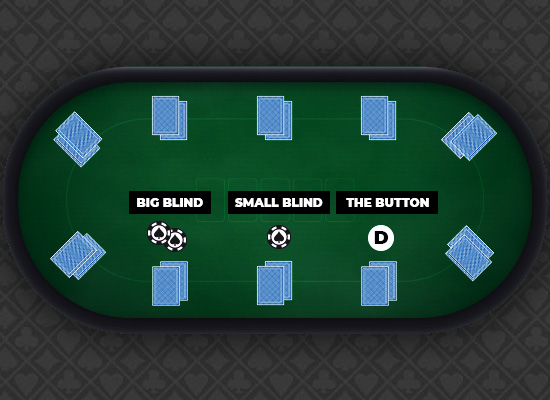
THE BLINDS
‘Blinds’ are preliminary bets made by two players before cards are dealt. Each hand of Texas Holdem Poker starts with two blinds—the big blind and the small blind.
Prior to cards being dealt, the player to the left of the dealer puts in chips equal (usually) to half the size of the minimum bet for the game. This is the small blind. The player to the left of the small blind (second player to the left of the dealer) puts in chips equal to the minimum bet for the game—this is the big blind.
The reason for the blinds is that if there were no obligation to bet, there would be nothing at stake and the first player to have to make a decision would have no reason to make a bet. The small and big blinds stimulate the action.
The dealer position is indicated by a disk called the ‘dealer button’, or simply, ‘the button’. This is the position from which the dealer would distribute cards if the dealer were one of the players.
SITTING DOWN
When you first sit down at a table, you must wait for the big blind to arrive at your position. This happens naturally, because the button moves one position to the left (clockwise) after each hand.
To get dealt in at the start of the next hand that wouldn’t put you in the small blind or dealer button position, you can ‘post’ (put in a blind the same amount of the big blind).
Each player must put both a small blind and a big blind into the pot once each per round. If you ever miss the blinds in a round, you must either wait for the big blind to get to you, or post a blind equivalent to the big blind.
FIRST ROUND
Once the blinds are in place, the dealer first deals one card face down to each player, then another once face down, starting with the player immediately to the left (who is the small blind). These two starting cards are called hole cards.
On screen, your hole cards appear face up, but don’t worry, only you can see your hole cards. Only the backs of every other player’s hole cards appear on screen. Every other player has a similar view, with only their own hole cards visible.
Each player starts with two cards, and then five cards are placed face-up in the center of the table. These community cards are part of each player’s hand, so each player has access to seven cards. Each player tries to make the best possible poker hand by using five of the seven cards.
A poker hand consists of exactly five cards, so only choose the best five of the seven cards. Even if you haven’t had experience with Hold’em, you don’t have to worry which are the best cards; the software automatically chooses the best five for you when it’s time to compare hands.
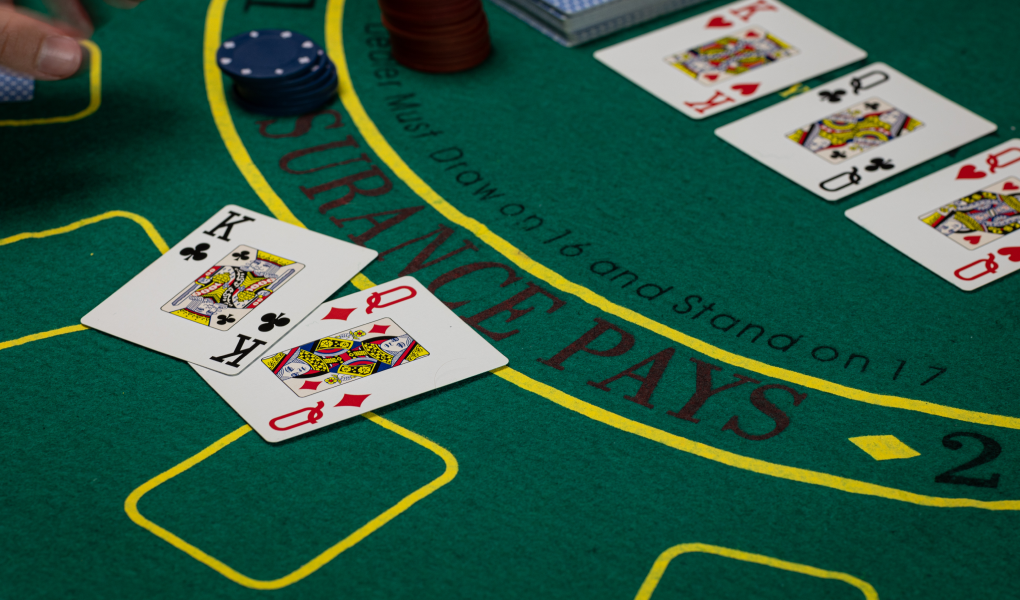
THE FLOP
Once the betting for the round is equalized, that is, once everyone has had an opportunity either to match the total betting—known as to ‘call’—or fold, the dealer deals three cards face up in the center of the table. These are the first three community cards, also known as ‘the flop’.
The second round of betting takes place. In this round, the betting starts with the first active player (a player who still has cards) to the left of the button. If the small blind called on the first round, that player would be first to act, even though he was next-to-last on the first round of betting.
Only in the first round (sometimes called the pre-flop round) does the betting start elsewhere. In all rounds after the first, the first player has two choices:
- Check. That is, make no bet
- Bet. That is, make a bet at the proper limit for that round
If no one bets, each player in turn has the same choices. It’s possible in every round except the first for no betting to occur. No betting in a round is called being checked around.
If anyone bets, each succeeding player has three choices:
- Fold – if the players fold, it means they stop playing in the hand and forfeit any chips they have bet
- Call – match the preceding bet
- Raise – increase the preceding bet
A player who checks retains his cards. If someone bets, when the action returns, a player who checked has the preceding three choices. To check and then raise when the betting returns is known, you guessed it, as ‘check-raising’. If you check with the intention of raising, you risk the possibility that no one will bet.
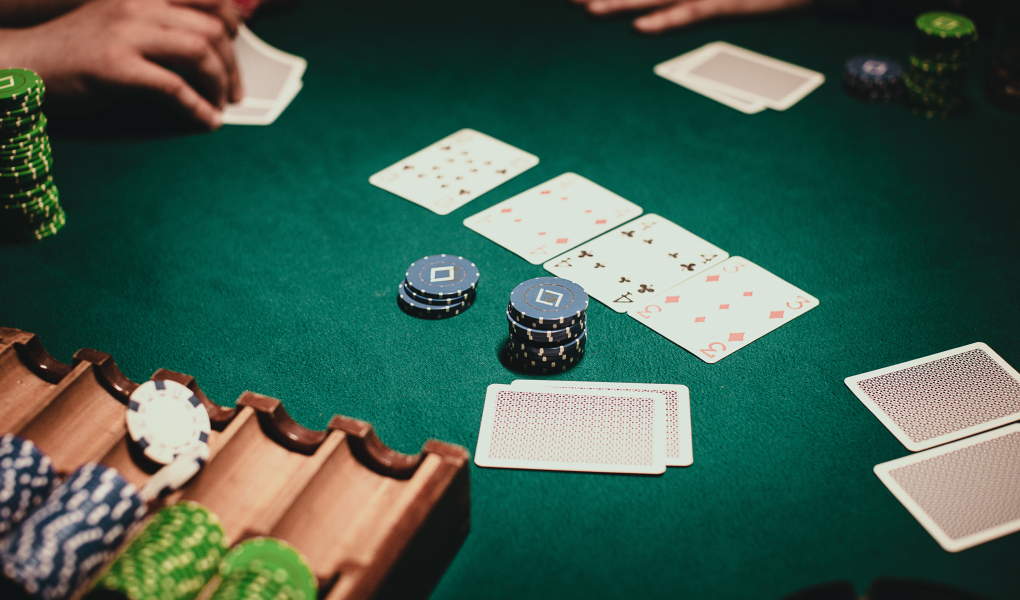
THE TURN
Once the betting for the second round is equalized, that is, once everyone has had an opportunity either to check or match the total betting for the round, the dealer deals one more card face up in the center of the table. This fourth of the community cards is called "The Turn".
The third round of betting takes place. Again, the betting starts with the first active player to the left of the button. The betting proceeds exactly the same as the second round. In a limit game, in the third round and fourth rounds the betting usually proceeds in increments twice the size of the first two rounds.
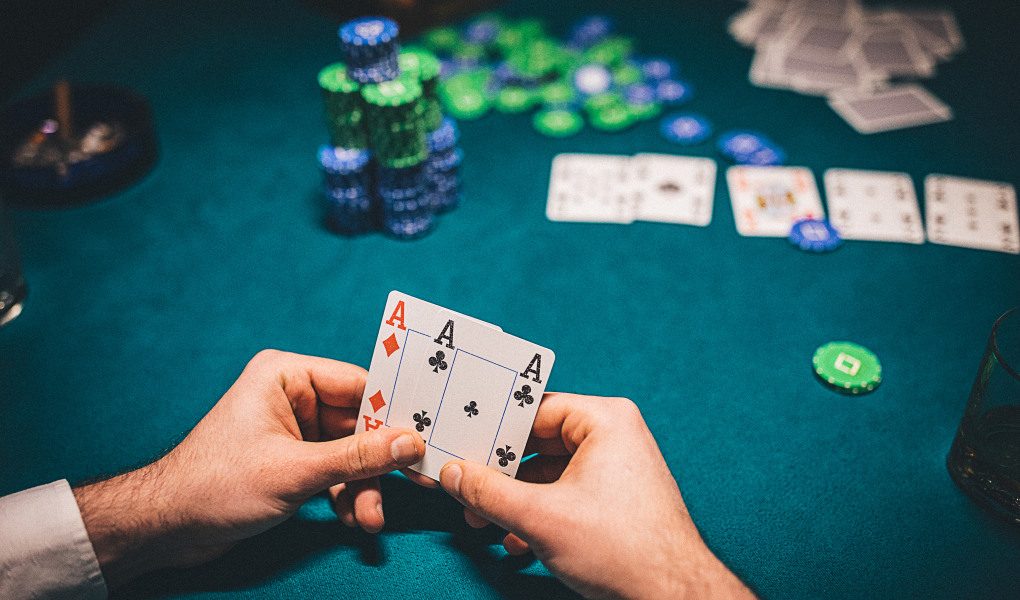
THE RIVER
Once the betting for the third round is equalized, the dealer deals a fifth and final card face up in the center of the table. This last community card is called "The River".
The fourth and final round of betting takes place. Again, the betting starts with the first active player to the left of the button. The betting proceeds exactly the same as the two previous rounds.
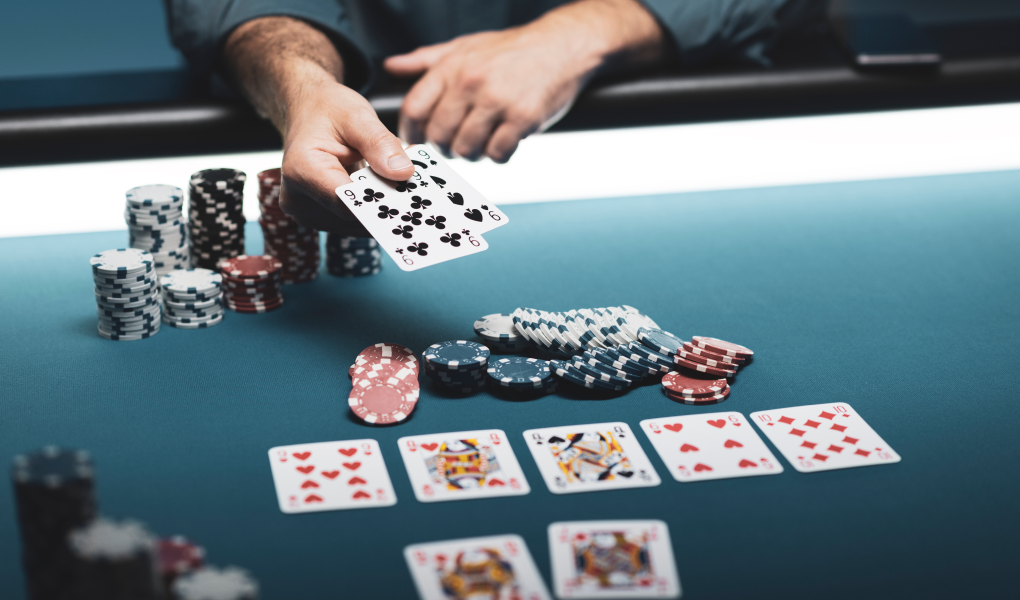
SHOWDOWN
Once the betting for the fourth round is equalized, the betting is over, and there’s a showdown.
The remaining players show their cards and the best hand—comprised of the best five cards from among each player’s combination of two hole cards plus the community cards—wins. The holder of the winning hand is awarded the pot. In the event of a tie for the best hand, the pot will be split equally among the tied players.
If the betting is not equalized on the final round—that is, one player bet or raised and no one called—there’s no showdown, and the software awards the pot to the player who made that uncalled bet. This is the case on any previous round, as well. If it happens on earlier rounds, no further cards are dealt, because the hand is over.
Sometimes a player runs out of chips before all the betting is over. In such case, one or more side pots are created, and the software awards appropriate main and side pots. When a player is all in, a bet or raise can be made that is not called, but a showdown still takes place.
Players don’t often show losing hands. You are entitled, however, to see any cards that were active at the showdown even if they were not shown. Click on “Show previous hand” to bring up a new window that shows the results of the last hand and all the active cards.
In determining the winning hand, the combination of five best cards sometimes includes both a player’s hole cards. Sometimes it includes only one of a player’s hole cards.
Sometimes—although this is rare—no hole cards are used. In such a case, the board would contain some combination better than any hand that can be made using any player’s hole cards. This is called playing the board. When all players play the board, the pot is split equally among all players remaining in the hand at that point.
LIVE TEXAS HOLD'EM GAME PLAY
Feeling confident? Let’s try a pretend game of online Texas Hold'em poker together!
Now that you’ve read the Texas Hold’em rules and understand how to play poker, let’s play a hand together so you can see how it all works in more detail.
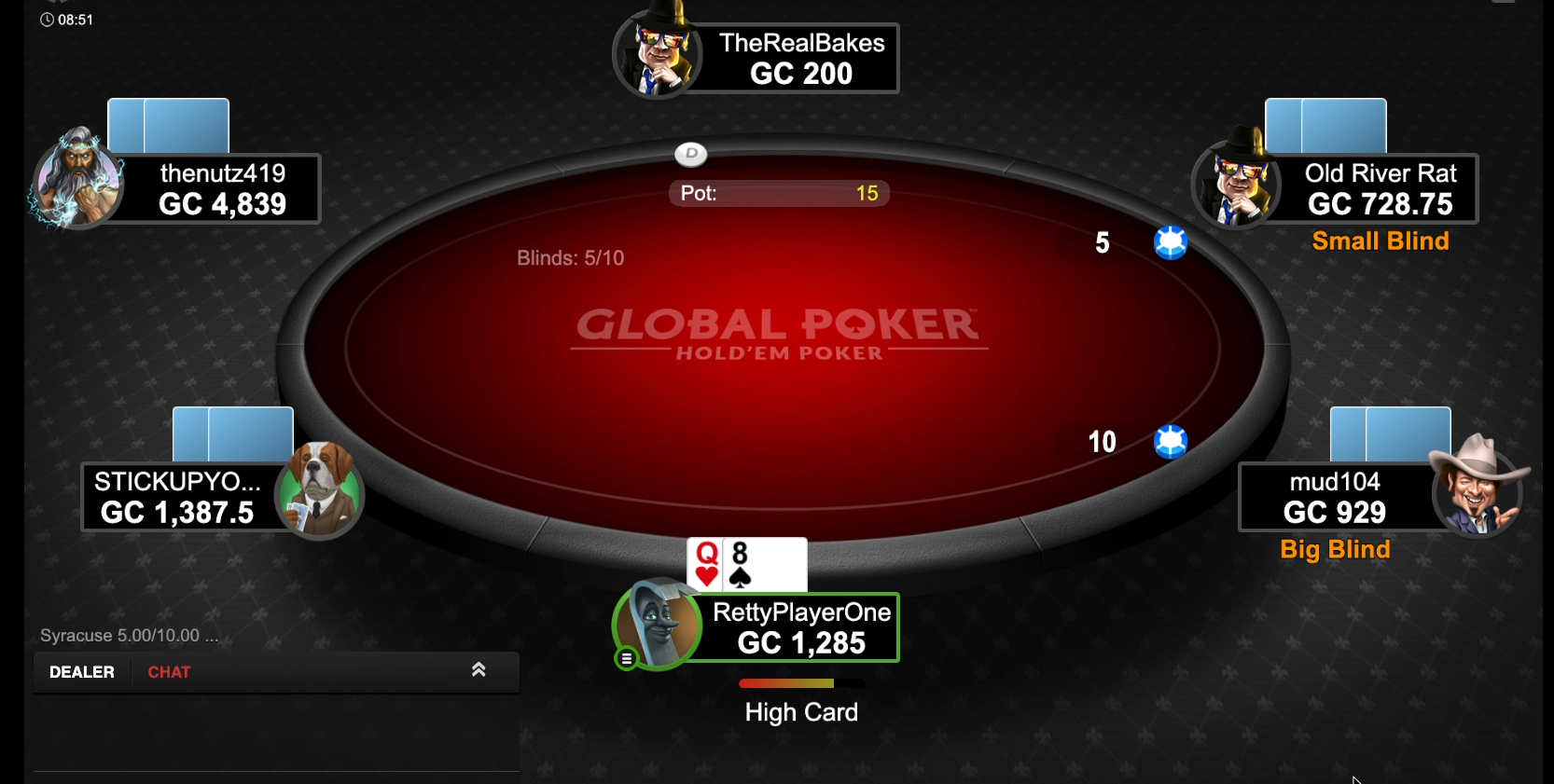
1. Ok, we’re sitting down and playing a 5/10 Gold Coin game.
What does 5/10 mean, I hear you ask? Good question. 5/10 represents the limits of this table. That means the small blind is 5 Gold Coins and the big blind is 10 Gold Coins.
Blinds are the forced bets at the start of each game designed to ensure there’s plenty of action.
Blinds are made by the players immediately to the left of the dealer button. The first player posts a ‘small blind’ and the second a ‘big blind’. The big blind is usually double the size of the small blind. You can see what the blinds are for a table by looking at the blinds column in the lobby. A game listed as ‘5/10’ has a small blind of 5 and a big blind of 10.
Player ‘Old River Rat’ is in the small blind, so has an automatic bet of 5 Gold Coins. Player ‘mud104’ is the big blind and puts out 10 Gold Coins.
Now we’re ready for our first round of betting! Notice how we can only see our cards and nobody else's? You only get to see other people’s cards if they get to showdown. We have Qh8s.
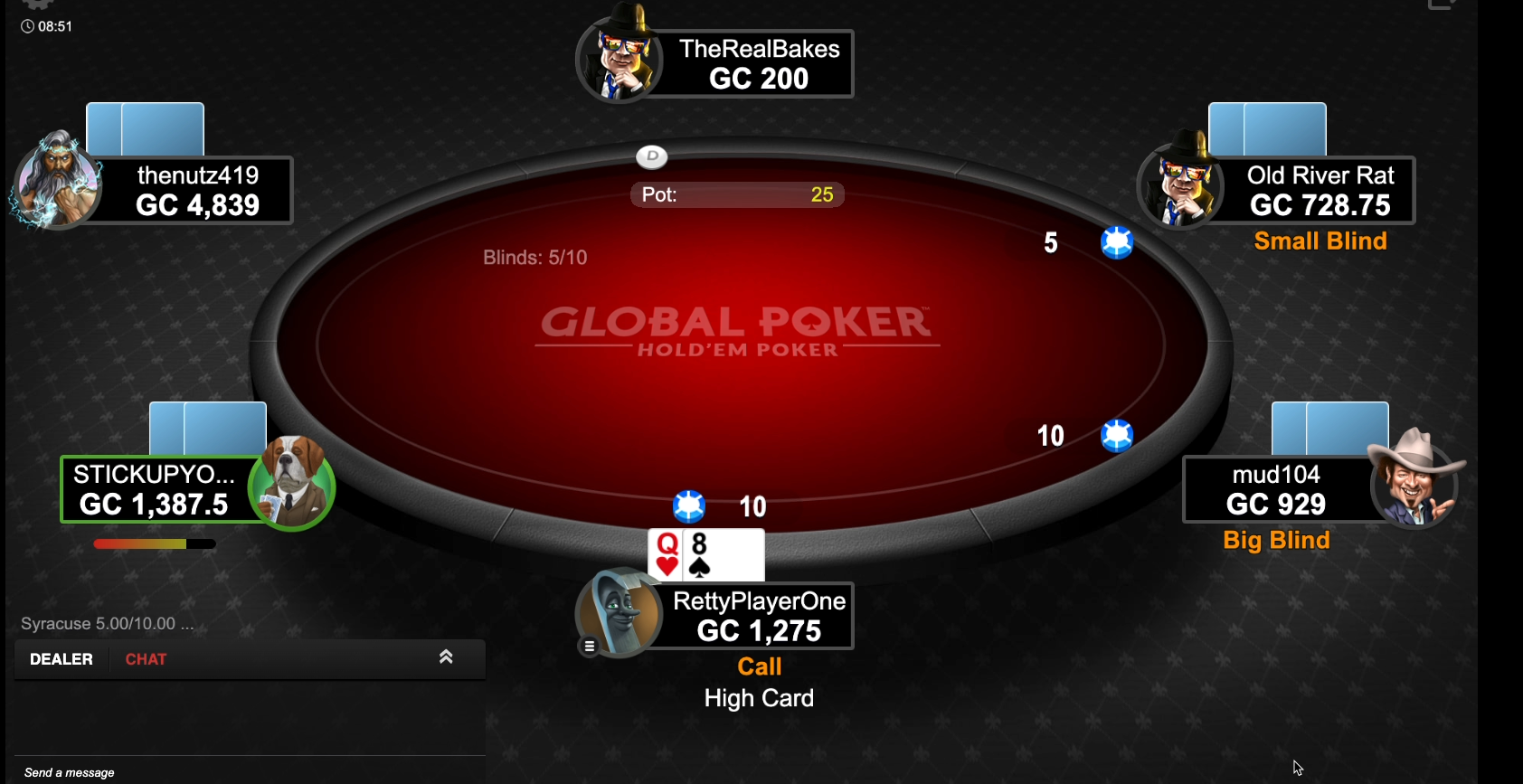
2. We (RettyPlayerOne) are the first to act and have to choose whether we want to put in 10 Gold Coins to match the blind. We choose to play 10 Gold Coins.
Now it’s ‘STICKUPYO…’s turn to choose to match the blind with 10 Gold Coins or fold. Player ‘thenutz419’ has not started playing yet so is listed as ‘waiting’. Player ‘TheRealBakes’ has no cards and won’t take part in this hand.
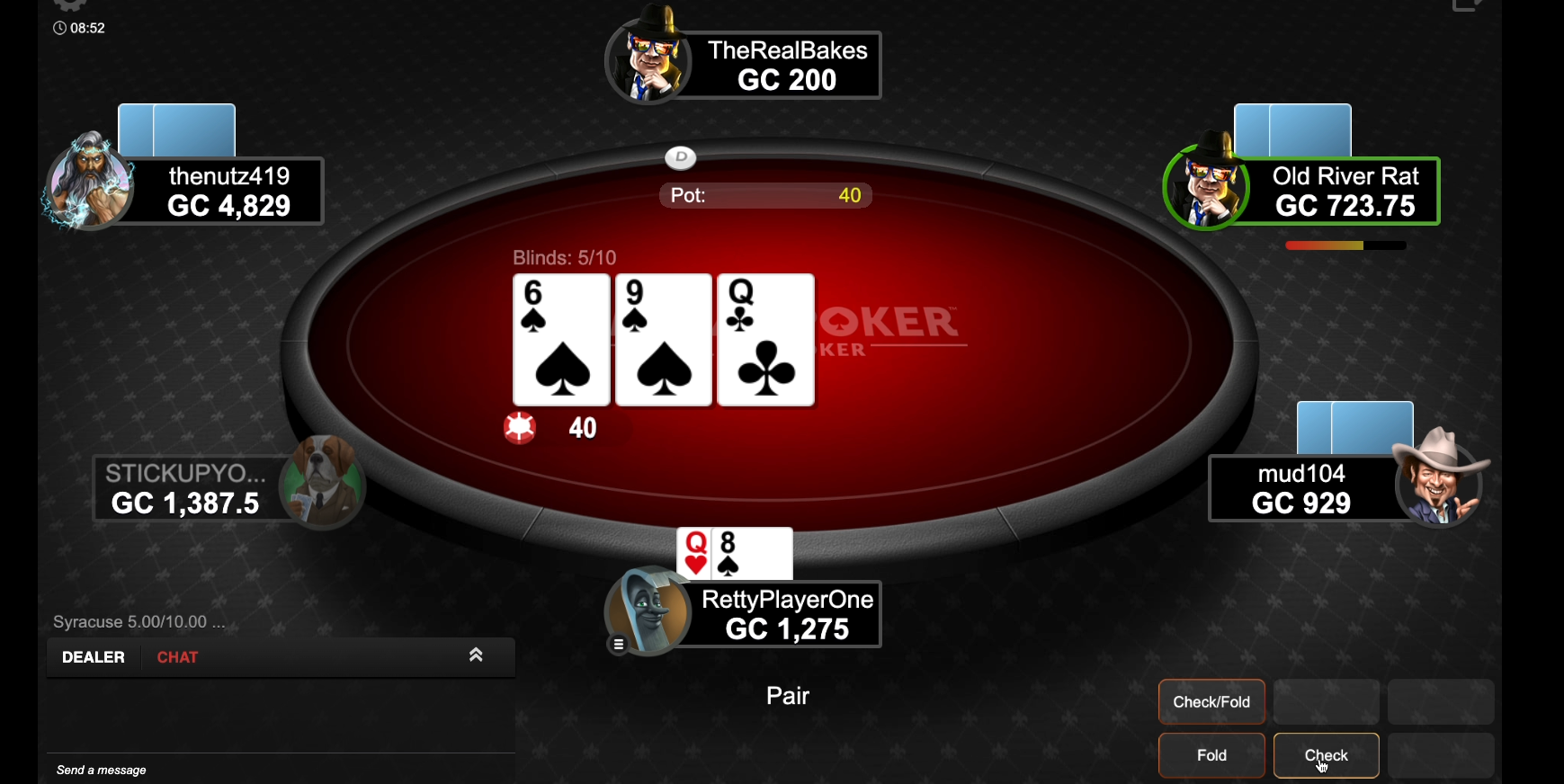
3. The action now gets to ‘Old River Rat’, who was the player in the small blind. They already had 5 Gold Coins in the middle so it only costs them another 5 to call, which they do.
No one decided to raise the bets in the first round. That means we don’t want to put any more in the pot. As the four players who are left (including us) all have an equal amount of Gold Coins in the pot, 10 Gold Coins each, this round of betting is over and we see the flop.
The flop has come out 6s9sQc. We can see with our Qh8s that we have a good hand at the moment, with top pair and a back door spade draw, we would have a flush (5 cards in the one suit if comes runner runner spade).
‘Old River Rat’ decides to check—’checking’ is when players choose not to raise the bet. We also check as early position—early position means one of the first players to act, a debatable play not betting, but uncertain of opponents style of play and want to keep the pot size small at this point with 4 players still in the hand, would feel more comfortable just calling a bet, ‘Mud 104’ and ‘thenutz419’ also check. Since all players agree with not putting any Gold Coins into the pot through this stage of the hand, the round of betting is over and we see the turn.
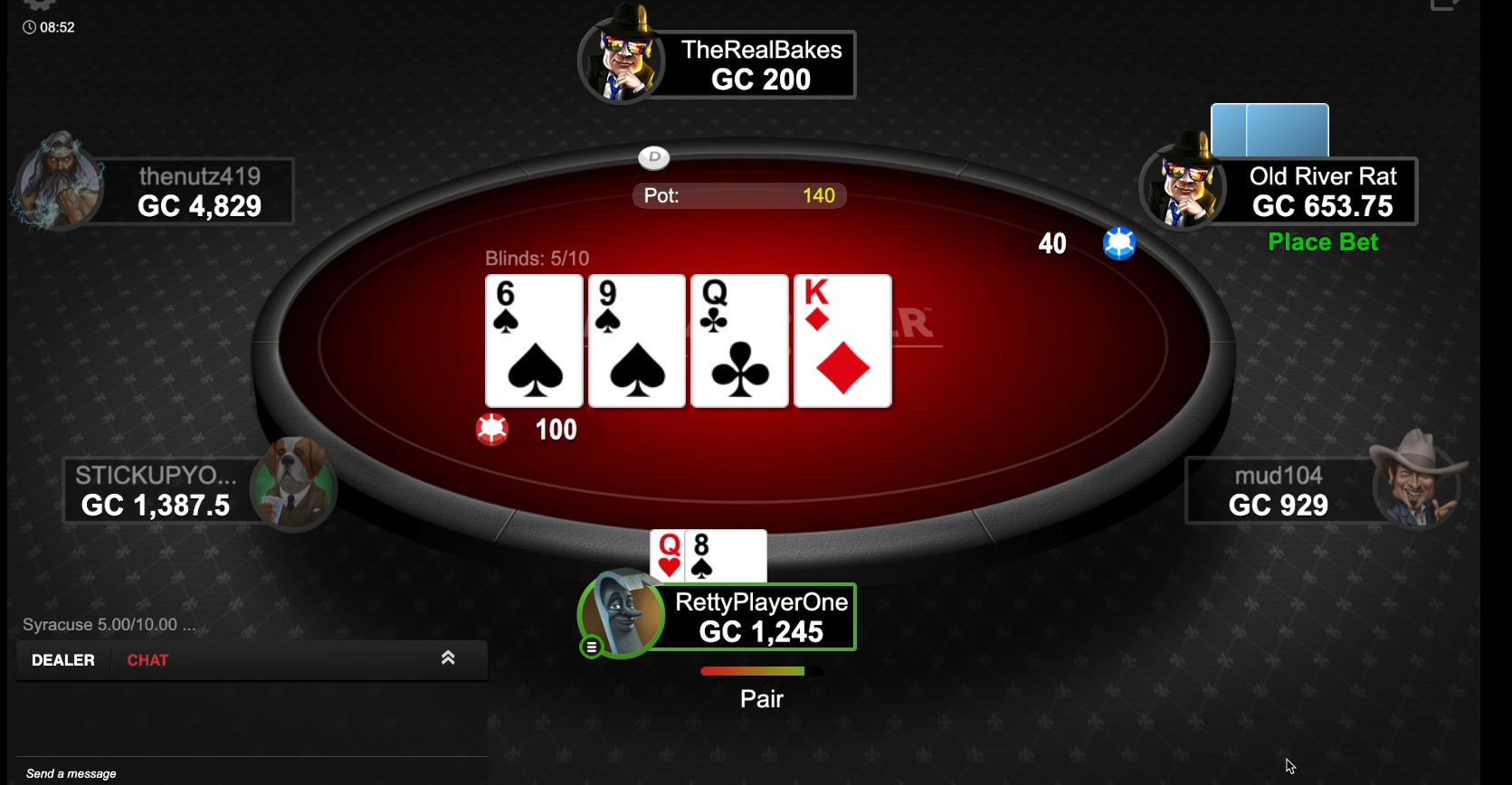
4. A King comes on the turn. This doesn’t change our hand much, if anything weakens it, opening up straight and higher pair possibilities. ‘Old River Rat’ bets 40 representing the King, potential straight or flush draw possibility, and it’s now our turn to either call or raise. Given we have the second top pair on a weak board, we have enough equity to make the call at this stage or potentially raise to see where we are at in the hand—meaning, if we raise and are called, we can make a presumption the opponent has a strong hand and we get more information, which might save us money on the river. However, our hand is now weaker than it was on the flop and there are players to act behind us.
We have 1,245 Gold Coins in front of us, so we can bet any amount between 0 and all of our Gold Coins. As a general rule, it’s good to bet somewhere between the amount currently in the pot and half of the pot.
There are 100 Gold Coins in the pot and we decide to call 40 Gold Coins, the bet made by ‘Old River Rat’. ‘Mud 104’ and ‘thenutz419’ decide to fold, this is good for us, as it improves our chances of winning the hand—less players in the hand.
The 40 Gold Coins contributed by each player is added to the original pot of 100 and we now have a total of 180 Gold Coins in the pot.
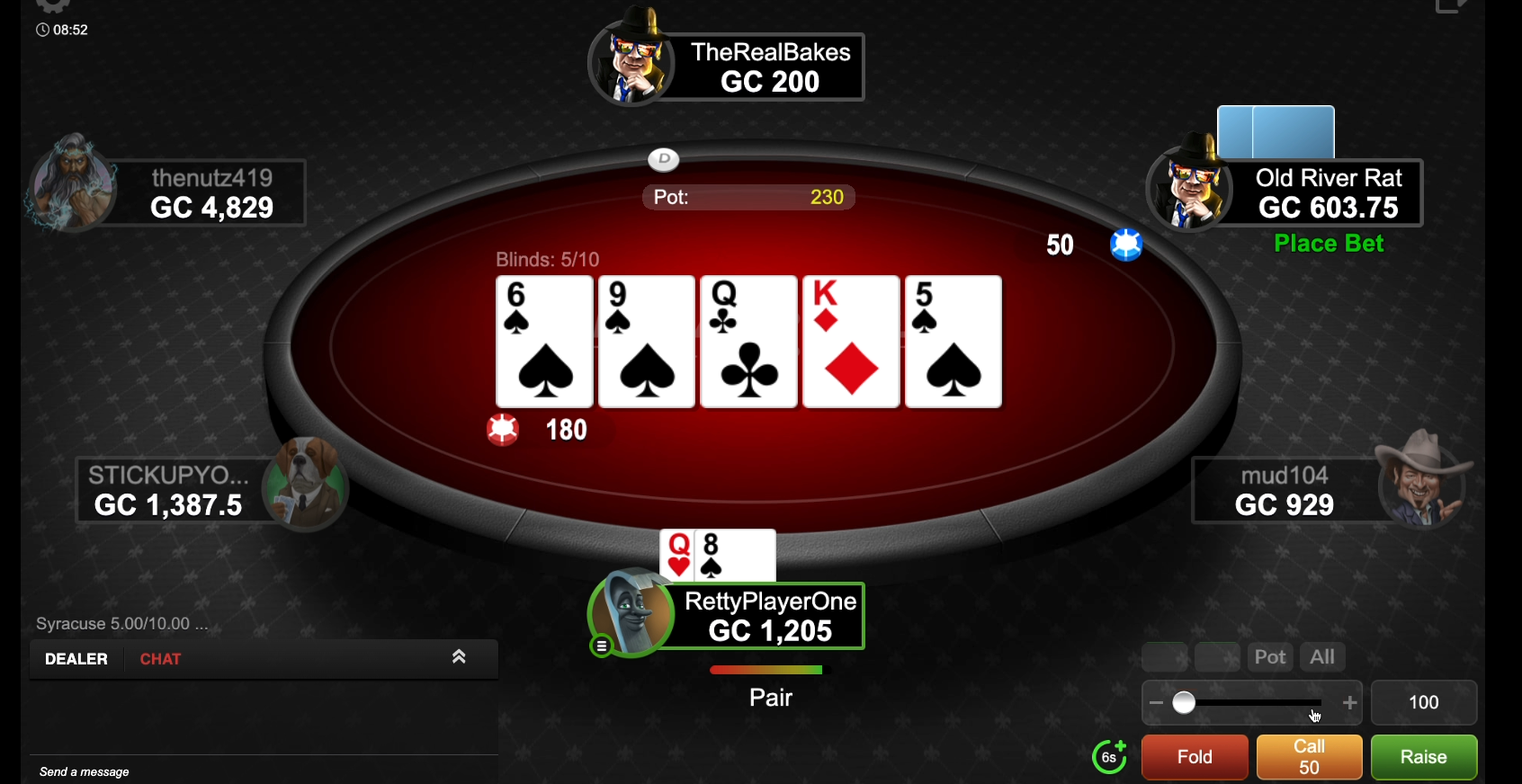
5. It’s now time for the river card to be dealt.
The river is the 5s which isn’t a great card for our hand but the card is a scare card for ‘Old River Rat’ as the spade flush gets there and opens up potential straights. It leaves us with one pair and in a tricky position, and action falls to our opponent (in position to make the first bet). Often an opponent's bet will dictate your next move in poker, bet size being one of the biggest contributing factors to your next move.
Given there are 180 Gold Coins in the pot, ‘Old River Rat’ makes a 50 gold coins bet. This is a very strange bet in relation to the size of the pot — as the pot builds, usually the bets get higher or are a percentage of the pot increases, in this case the opponent bets less then ⅓ of the pot. and gives us pot odds to call — in poker, pot odds are the ratio of the current size of the pot to the cost of a contemplated call.
This bet also looks defensive. Often in this instance the best play is to show strength, but we also want to be strategic and remain in the game. The hand for us, is open to a flush draw, and king pair. We decide to call.

6. Now, the result. We show first with the Queen Pair. ‘Old River Rat’ chooses to throw their cards away (this is called ‘muck’ing your hand in poker), meaning our hand is the best, we win the pot.
This brings the final round of betting to an end. That’s the end of the hand!
There you have it, that is a poker hand. Now that you have the basics under your belt, the best thing to do from here is practice, practice, practice.
Click here to put some Gold Coins into action and try your ‘hand’ at some free poker games online!
PLAY TEXAS HOLD'EM POKER FOR FREE ONLINE!
Fancy your chances in a live game? Register now and start playing Texas Hold’em Poker for free online.
Or, you can browse our entire collection of poker games online to try something different—we have many more gripping variants, from Omaha to Bounty to Crazy Pineapple. Take a look at our essential poker games edit to find which game suits you best. We’ll see you at the poker table!
TEXAS HOLD'EM POKER HAND RANKINGS
Not sure what poker hands are best when it comes to Texas Hold‘em hands? Check out the winning Hold'em hands from best to worst possible card poker hands.
As you start out, keep this list handy to keep track of what hands you have and how it compares with the other players! Screenshot it, download it, heck - print it if you must, but keep it nearby whenever you play in the early days.
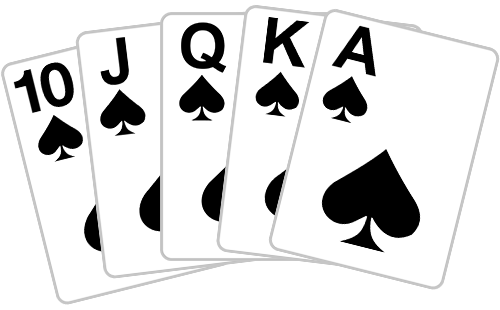
Royal Flush
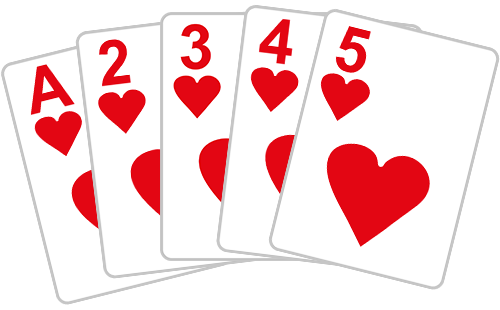
Straight Flush
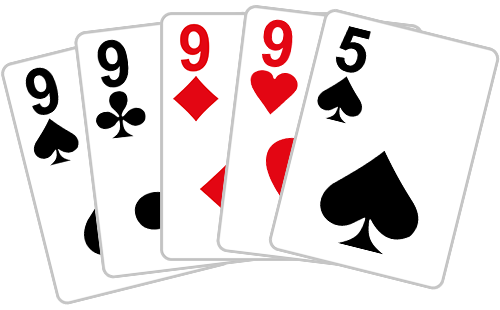
Four of a Kind
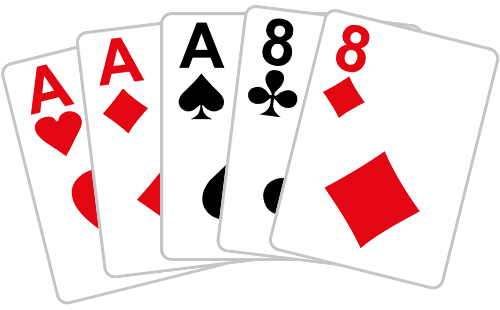
Full House
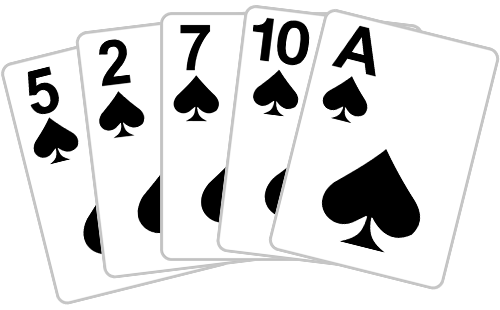
Flush
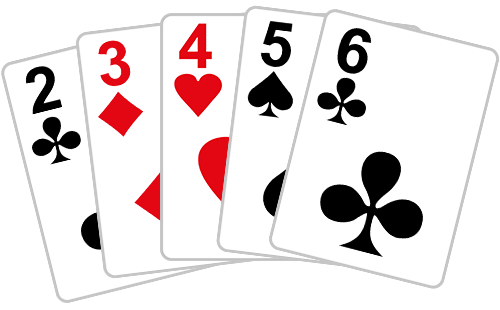
Straight
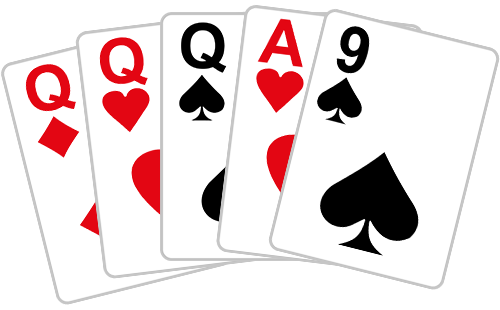
Three of a Kind

Two Pair

One Pair
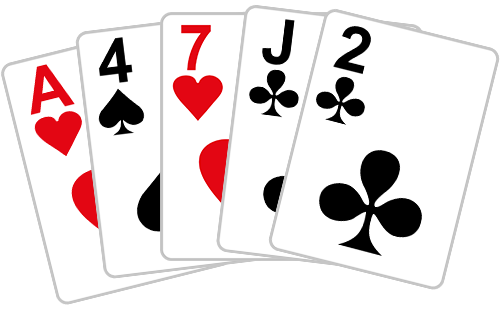
High Card
Royal Flush
Ah Kh Qh Jh 10h – This is the best you can get in the world of Texas Hold'em hands. The top 5 cards in order, all of the same suit. If you have this hand, count your lucky stars and then count the Gold Coins in the pot because you can’t be beat!
Straight Flush
9s 8s 7s 6s 5s – Like the Royal flush but not the top 5 cards. Any other 5 cards in order and of the same suit. This hand is likely a winner as long as nobody can make the Royal Flush at the same time!
Four of a Kind
8s 8c 8h 8d 2c – Four cards of the same rank together. This is a very strong Texas Hold'em hand especially if you have two of the cards as your hole cards meaning the other players might not know you have it.
Full House
Qs Qc Qh 7d 7h – If you have three of one rank and two of another rank this is called a full house. You can’t fit anything more in your hand!
Flush
Ac Jc 10c 4c 3c – All five cards being the same suit.
Straight
8d 7c 6d 5h 4s – Five cards in order but of different suits.
Three of a Kind
9d 9h 9c Ad 3s – Three cards of the same rank.
Two Pair
5h 5s 2d 2h Qd – Two lots of two cards at the same rank.
One Pair
Kh Kd 8h 3d 2s – Two cards of the same rank.
High Card
As Jd 9h 5c 2h – If your cards don’t fit together in any way then you just play the highest card in your hand.
There you have it —the complete lowdown on Texas Hold'em poker hands.
For more insight into poker hand rankings, especially when it comes to other poker variants, check out our Poker Hand Rankings page for all you need to know!
TEXAS HOLD'EM POKER FREQUENTLY ASKED QUESTIONS
What are the basic rules of Texas Hold'em Poker?
The basic rules of Texas Hold'em Poker include using a standard 52-card deck, dealing two hole cards to each player, and using community cards to form the best hand.
How many rounds are there in a game of Texas Hold'em Poker?
A game of Texas Hold'em Poker consists of four rounds: Preflop, Flop, Turn, and River.
What are the different types of Texas Hold'em games, and how do they differ?
The different types of Texas Hold'em games are No-Limit, Pot-Limit, and Fixed-Limit. They differ based on the betting structure and the maximum amount players can bet.
How do the blinds work in Texas Hold'em Poker?
In Texas Hold'em Poker, blinds are forced bets made by two players before the cards are dealt. The small blind is usually half the size of the minimum bet, and the big blind is the minimum bet for the game.
What is the objective of Texas Hold'em Poker?
The objective of Texas Hold'em Poker is to have the best combination of the five community cards and two hole cards to win the pot.
How are the winning hands determined in Texas Hold'em Poker?
Winning hands in Texas Hold'em Poker are determined by the best combination of five cards from the player's two hole cards and the five community cards on the table.
What are the key differences between No-Limit, Pot-Limit, and Fixed-Limit Texas Hold'em?
The key differences between No-Limit, Pot-Limit, and Fixed-Limit Texas Hold'em are in the betting structure. In No-Limit, players can bet any amount, in Pot-Limit, players can bet up to the size of the pot, and in Fixed-Limit, bets and raises are set at specific amounts.
How can I improve my Texas Hold'em Poker strategy and skills?
To improve your Texas Hold'em Poker strategy and skills, practice regularly, study the game, learn from experienced players, and analyze your gameplay to identify areas for improvement.
MORE MUST-READ POKER GUIDES



